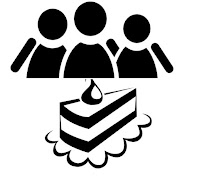 |
| Mr. Campbell and I |
Gems:
Student Engagement:
According to a few students’ feedback my lesson, energy and knowledge was “out of the ballpark.” For the lesson, I connected team communication to communication used in baseball. I have always been an avid sports fan, and this was reflected in my lesson to keep the students fully engaged. This is important because if I am not excited about what I am teaching it, why am I teaching it? In addition, I was able to use individual and group teaching techniques to create a variety of ways for students to be engaged. I understand that all students are all engaged differently, so it is important to provide a variety of learning styles.
According to a few students’ feedback my lesson, energy and knowledge was “out of the ballpark.” For the lesson, I connected team communication to communication used in baseball. I have always been an avid sports fan, and this was reflected in my lesson to keep the students fully engaged. This is important because if I am not excited about what I am teaching it, why am I teaching it? In addition, I was able to use individual and group teaching techniques to create a variety of ways for students to be engaged. I understand that all students are all engaged differently, so it is important to provide a variety of learning styles.
 |
| Large group discussion |
I was able to create learning experiences that allowed for visual, auditory and kinesthetic modalities to be used to increase my student engagement; in turn provided variability to the lesson. I was able to engage them visually with a YouTube video to create the setting of a baseball stadium, small/large group discussions to engage auditory learners, and skits to encourage kinesthetic movement.
Growth:
I was lucky enough to teach this lesson twice with some time to think and debrief. As I reflected in that time I thought of things to change, and wrote them on sticky notes to guide me in the next class. Practice makes perfect, so round two was defiantly less rusty than round one. In the second class I was more comfortable and confident, which allowed for more thoughtful discussion.
Opps:
Check for
Understanding:
This has been
something I have struggled with since the beginning. I am becoming better, but
it is still difficult and something I need to grow in. I know how to give good
directions, but still find confusion among some students. I realized that
providing direction verbally and visually is helpful. However I know there is
other ways to ensure understanding than being repetitive, and it comes with
time and practice.
Classroom Management:
Classroom management is going to be a challenge for me. This time was not bad, but it is an area I noticed I will have to work at. Throughout this experience and my micro-teaching experience, I faced the challenge of knowing my place in the classroom, which made me hesitate to take action to certain behaviors. For example, I had a chatty student who wanted to share multiple stories about communication used on her softball team. Although it was relevant it interrupted class, and caused delays in the lesson. Looking back, I let my discomfort of not knowing my place in the classroom interrupt my instructional time, which affected other students’ learning experience. I feel my comfort with classroom management will improve once I am able to ‘take over’ the classroom by presenting my expectations and consequences.
Classroom Management:
Classroom management is going to be a challenge for me. This time was not bad, but it is an area I noticed I will have to work at. Throughout this experience and my micro-teaching experience, I faced the challenge of knowing my place in the classroom, which made me hesitate to take action to certain behaviors. For example, I had a chatty student who wanted to share multiple stories about communication used on her softball team. Although it was relevant it interrupted class, and caused delays in the lesson. Looking back, I let my discomfort of not knowing my place in the classroom interrupt my instructional time, which affected other students’ learning experience. I feel my comfort with classroom management will improve once I am able to ‘take over’ the classroom by presenting my expectations and consequences.
Overall, I
may not be 100% ready, or have all the experiences, knowledge and assignments I
need yet...but I am ready to grow. As I taught the lesson, I wanted to grow rapport with the students and be stronger in my teaching strategies for them. My half day at Derry truly built up my excitement for the
spring! I couldn't be more excited to grow and learn from Mr. Campbell
and Mrs. Rippole with awesome students.


















